The #1 Strength Workout to Reshape Your Body After 40
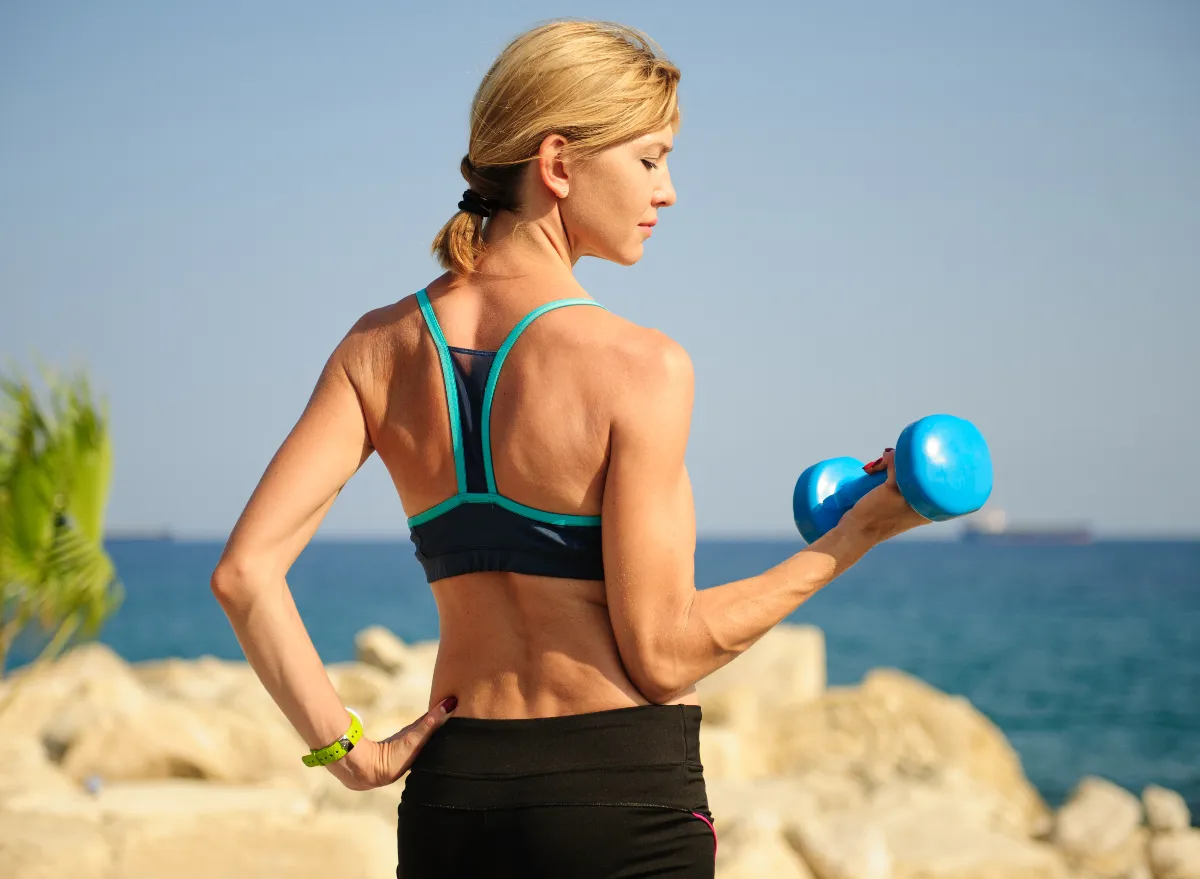
So many individuals find themselves reaching a certain point in life when they are not satisfied with their physique. Perhaps their clothes don't fit the same way they used to, or it's challenging to stay fit. We've reached out to Mike Bohl, MD, MPH, ALM, a member of our Medical Expert Board and a certified personal trainer and nutrition coach who has helped develop the Body Program at Ro, who shares with us the #1 strength workout to reshape your body after 40. Since your gym time is precious, it's important to spend it on the right exercises and machines that will work on the areas that count!
Many changes occur in your body as you age, whether you want them to or not. For one, your bones typically begin to shrink and lose density, making them weak and much easier to break, the Mayo Clinic explains. Bone loss can even cause some individuals to lose a bit of their height. In addition, your muscles lose endurance, strength, and flexibility. It's essential to include strength training in your routine in order to maintain balance, stability, and coordination. You'll feel so much better, be stronger, and achieve the healthy, toned body you seek!
So read on to learn Dr. Bohl's top-recommended routine to reshape your body after 40, and next, don't miss 5 Dumbbell Exercises That Drastically Change Your Body Shape After 40.
Strength training is necessary if you want to reshape your body after 40.
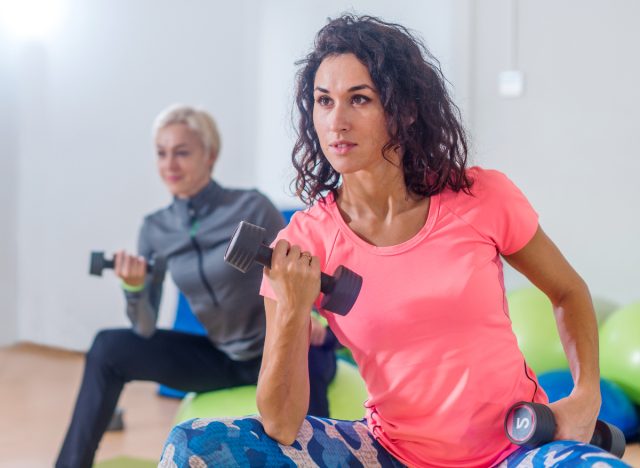
There are two ways in which strength training can reshape your body, Dr. Bohl says. "It burns calories, so over time you lose fat, and it strengthens and builds muscle. Overall, a solid strength-training routine can make your body more toned," he explains.
There are different approaches to starting strength training. According to Dr. Bohl, "Some people like working out their entire body on the same day, doing fewer exercises of each muscle group. And other people like to do what's called a 'split routine,' which is when you focus on specific areas of the body each day." One example of a split routine is to perform your "push" muscles on one of your workout days, do your "pull" muscles on a different day, and your legs and core on another.
If you're wondering exactly how much you should exercise in order to make a solid difference, plan on three days every week. Dr. Bohl advises, "If you're looking for a great strength workout to reshape your whole body after hitting 40, doing a full-body workout every three days or so might be what you're looking for. This means going around the gym and using selectorized machines, cables, and/or free weights to work out muscle groups from head to toe, doing three to six sets of 10 to 12 reps of each."
These are the strength training exercises and muscle groups to focus on in your workout.
These are the exercises and specific muscle groups you should concentrate on during your full-body workouts. You can easily work them into your "split routine."
1. Biceps
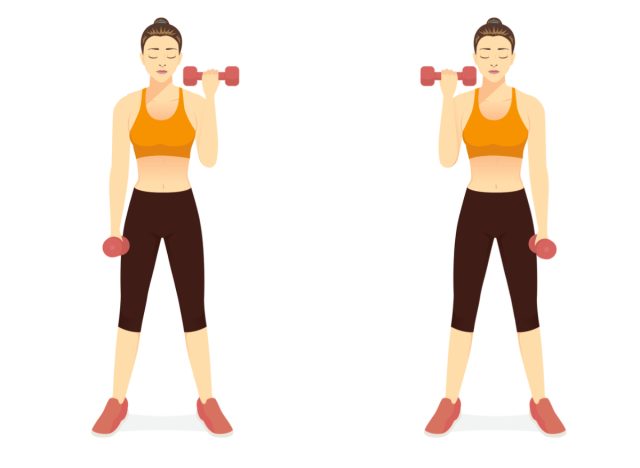
For your biceps, Dr. Bohl suggests performing standard bicep curls. This exercise will boost your upper arm strength. You can use the bicep curl machine at your gym, or perform this exercise with dumbbells.
If opting for free weights, hold a dumbbell in one hand with your palm facing toward the sky, the Mayo Clinic explains. Bend at the elbow, and gradually curl the weight up to your chest. Then, bring the weight back down—slow and steady—to the position you started in.
2. Triceps
For your triceps, Dr. Bohl suggests performing arm extensions or dips.
If you opt for dips, you'll need access to a dip machine, parallel bars, or a dip stand. You'll set up by grabbing the parallel bars and hoisting your body up to fully extend your arms. Hinge forward. Then, descend—aka, "dip"—until your elbows form a 90-degree angle. Make sure your elbows stay close to the sides of your body. Then, push your body back up so that your arms are straight once again.
3. Shoulders
For your shoulders, Dr. Bohl suggests performing overhead presses or delt flies.
Let's walk through a dumbbell overhead press. To set up, place your feet hip-width distance apart, have a bit of a bend in both knees, and hold a dumbbell in each hand, MasterClass instructs. With both palms facing in front of you, bring the dumbbells just a bit over your shoulders. Then, it's time to start the upward press by pushing the weights overhead. Your arms should be fully extended. Bend your elbows to lower the dumbbells.
4. Upper Back
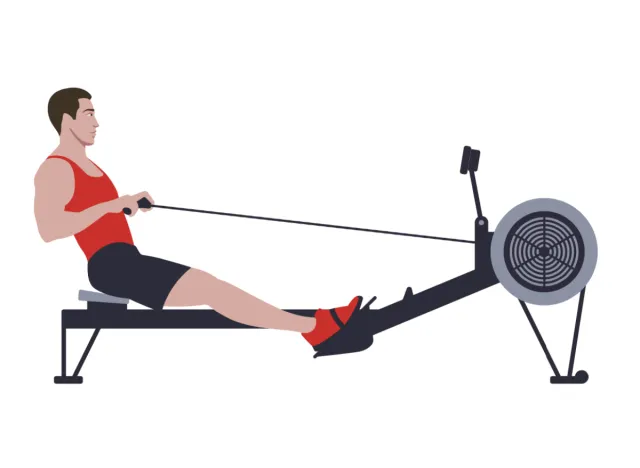
For your upper back, Dr. Bohl recommends targeting the area with rowing exercises.
According to BarBend, to properly set yourself up on a rower, you'll first want to establish the "drag," which is how much resistance you'll be working with during your workout. This can be adjusted on the damper. Once you're sitting down on the rower, you'll strap your feet in on the foot pads. You'll want to hinge your upper body forward to lean into the movement and press through your feet to "explosively" straighten both legs.
5. Lats
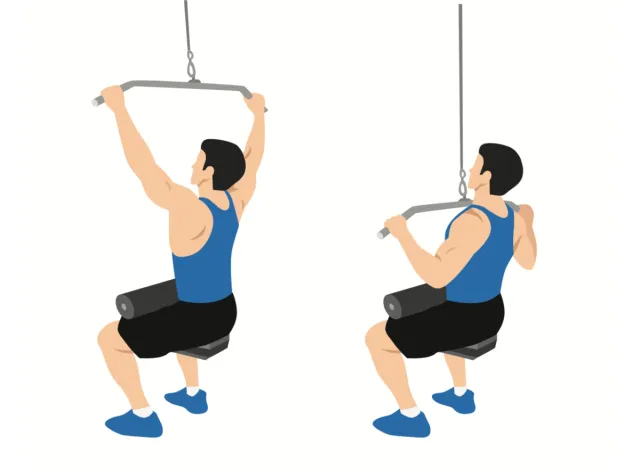
To work on your lats, Dr. Bohl suggests performing pull-ups or working out on the lat pulldown machine.
With your body facing the lat pulldown machine, take hold of the bar with an overhand grip so your hands are placed the width of your shoulder span, PureGym instructs. Descend into a seated position with your arms holding onto the bar overhead. Bring both elbows downward in order to pull the bar to your torso. This may require you to lean back a bit. Then, gradually release the lat pulldown bar so that your arms are extended once again before performing the next rep.
6. Abs
Dr. Bohl notes that some gyms have ab machines you can work with, or you can opt for crunches or sit-ups.
To perform classic sit-ups, lie down on a mat with your feet planted on the ground, your knees bent, and your hands behind your ears. Then, slowly bring your chest up toward your thighs, as far as it can go. Lower your body back down to the ground before performing the next rep.
7. Glutes
Leg presses are a great exercise to fire up the glutes, and there are additional machines at the gym you can utilize to target your glutes as well.
To set up, position both feet on the machine's footplate so that your toes point up, WebMD explains. Your knees should be bent to form 90-degree angles. Take hold of the side handles. Then, press through your feet to extend both legs, but make sure your knees don't lock out. Remain here for a second before descending to the position you started in.
8. Quadriceps
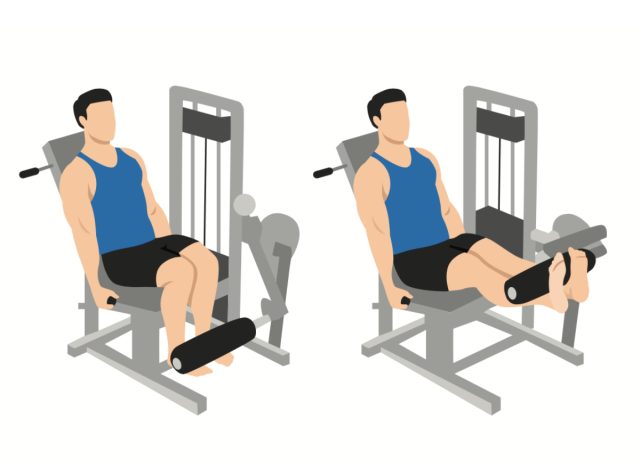
Now, it's time to work the quadriceps with some leg extensions.
To set up for this exercise, make sure you're able to comfortably sit with a flat back against the pad and both knees bent to 90 degrees, PureGym explains. Your toes should point up. Take hold of the bars on the side of the seat. Utilize your quads to bring the leg pad upward so that your legs are totally extended. Remain here for a moment before lowering the pad back down.
9. Hamstrings
Dr. Bohl recommends leg flexions for your hamstrings.
You'll want to hinge forward a bit and activate your buttocks in order to bring your upper thigh to a 45-degree angle, VAHVA Fitness explains. Feel free to hold onto a wall for stability. Make sure your upper thigh remains stationary while the flex comes from your knee.
10. Calves
"There are a variety of machines that target the calves, including standing calf raises," Dr. Bohl explains.
According to Muscle & Fitness, you'll start this exercise by making the shoulder pad is set properly for your height. Then, step under the pad, and position the balls of both feet on the machine's platform. Your toes should be pointing forward. Extend your knees and hips to bring the shoulder pad up. Then, lower your heels back down, breathe out, and flex your calf muscles. Make sure you're using control with each movement.









